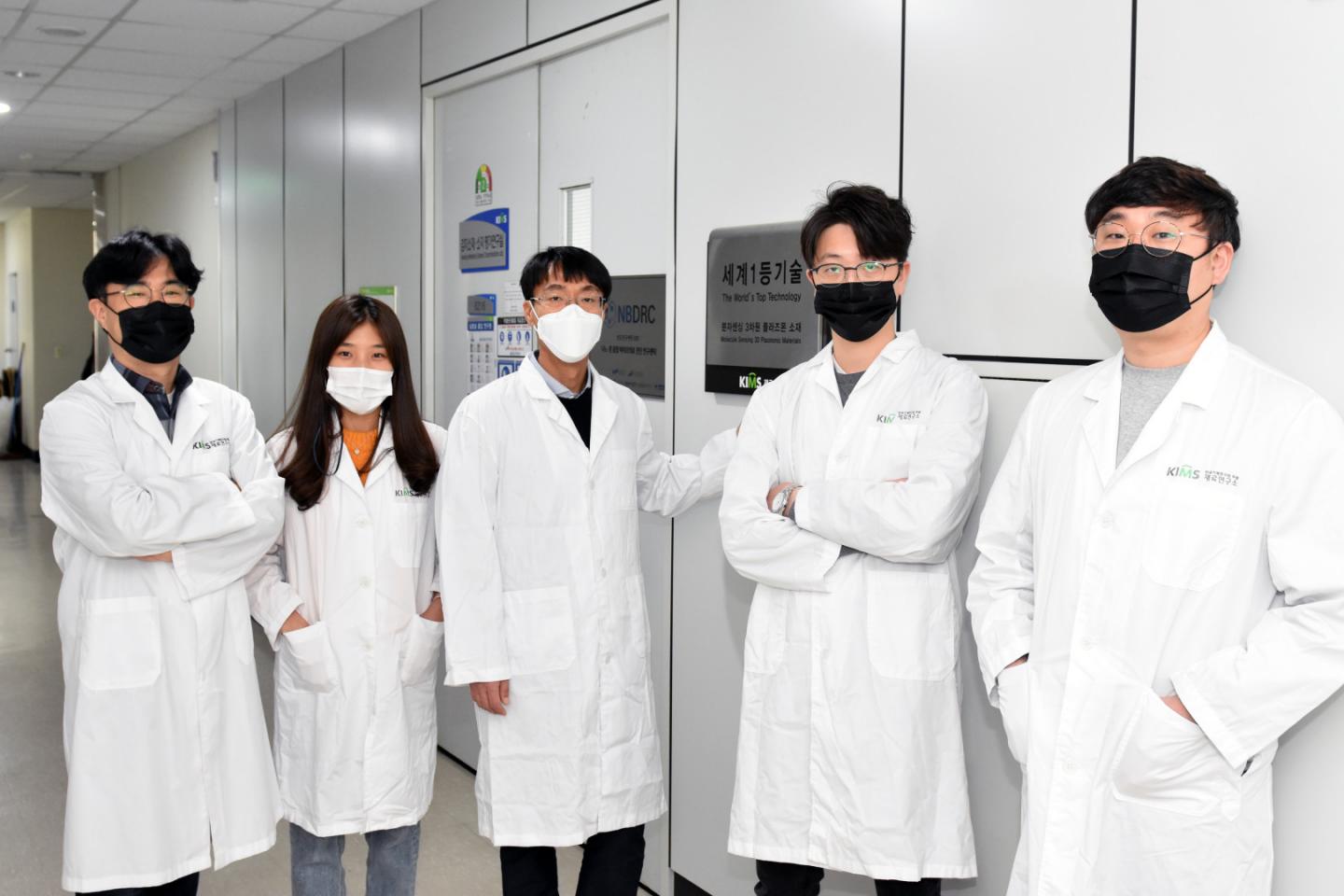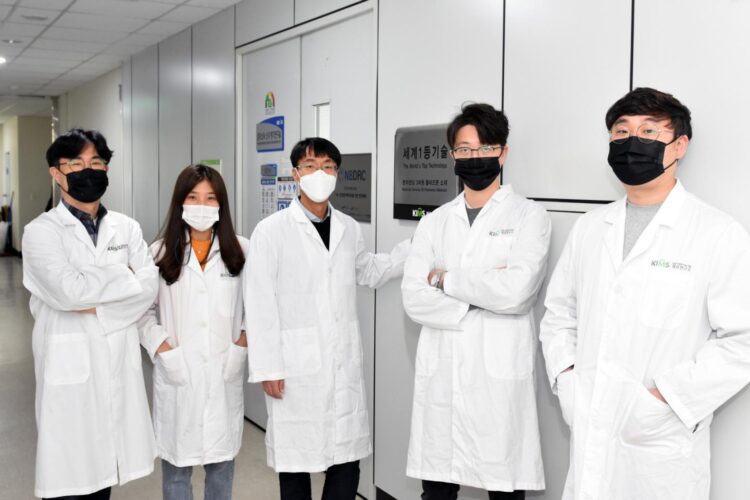KIMS developed an optical sensor material for drug detection in sweat

Credit: Korea Institute of Materials Science (KIMS)
Researchers in South Korea have successfully developed a wearable sensor that can detect illegal drugs in sweat by using nanomaterials technology that amplify the optical signal of narcotics to a flexible, body-worn material. Led by Dr. Ho Sang Jung, the research unit is part of the Korea Institute of Materials Science(KIMS), a government-funded research institute under the Ministry of Science and ICT.
The technology enables fast and highly sensitive drug detection: the sweat patch is attached to the skin for a certain period of time and then irradiated with light for testing. It only takes one minute without requiring additional process.
Traditional drug detection process requires a complex method of extracting suspected drug components from biologic specimens including hair, blood, and urine, and then analyzing drugs through gas or liquid chromatography-mass spectrometry (GC/MS or LC/MS). It takes longer testing time and requires a large room for the instrument and skilled technicians. Although rapid kits can detect drugs in urine, they only detect a single component in a single test and have low sensitivity.
In the case of athletes, anti-doping drug testing is conducted to detect prohibited substances in blood and urine. Blood testing is often avoided due to concerns about decline in athletic performance, and urine testing may violate human rights as the tester must observe the athlete’s urination. For the large sports events such as the Olympics, it is difficult to test all of the participants.
The researchers focused on sweat which is not invasive and relatively free from human rights issues. However, only small amount of substances is discharged in sweat, even though sweat contains various drugs taken so a highly sensitive sensor technology had to be developed for better detection.
The team’s highly sensitive sensing utilized the surface-enhanced Raman scattering technology capable of enhancing the Raman signal of chemical substances by 1010 times and more. As the Raman scattering signal includes the specific signal of molecules, intuitive substance identification is possible no matter what drug is discharged.
The researchers paid attention to the cocoon protein, a flexible and wearable material to develop a wearable optical sensor. A silk fibroin solution, a natural protein, was extracted from silkworm cocoon to make a 160 nanometer (nm) thick film. The film was coated with 250 nanometers (nm) thick silver nanowire and transferred to the medical patch that can be attached to the skin.
Once the patch absorbs the sweat, the drug substance in the sweat penetrates the wearable sensor and reaches the silver nanowire. By irradiating the Raman laser on the patch, the drug can be detected in real time without removing the sensor.
This technology can help address social problems such as drug distribution and abuse related to celebrities, drug transactions in clubs, and the prohibited substance taken by athletes. Since the production cost is less than 50 cents per piece, it can be used for an anti-doping program as a complete enumeration survey during large sports events such as the Olympics.
Dr. Ho Sang Jung, the leader of research unit, said, “As seen in recent drug-related crimes, Korea is no longer a drug-free country. The developed technology would overcome the technological limitations on identifying drug and prohibited substance use and enable drug detection without invasive and ethical problems.”
###
This work was supported by the Fundamental Research Program of the Korea Institute of Materials Science (KIMS) and funded by the Ministry of Science and ICT (MSIT). The article explaining results was published in ACS Applied Materials and Interfaces, a globally renowned academic journal on January 6, 2021. The technology was patented in South Korea and has been applied for a US patent.
Based on this project, the researchers are actively developing wearable healthcare sensors that enable rapid testing of metabolites related to diseases.
Glossary description:
* Gas or liquid chromatography-mass spectrometry: an analytical method to identify different substances within a test sample by extracting substances, separating the mixture, measuring molecular weight, etc.
* Surface-enhanced Raman scattering: a technology to amplify molecular signal to 109 – 1011 times. The electromagnetic field enhancement phenomenon on the noble metal nanoparticle surfaces is applied to the development of ultra-sensitive sensors.
* Silk fibroin: the fibroin protein extracted from silkworm cocoon
* Silver nanowire: nanowire made of silver with diameters that are dozens of nanometer, and lengths of few micrometer
About Korea Institute of Materials Science (KIMS)
KIMS is a non-profit government-funded research institute under the Ministry of Science and ICT of the Republic of Korea. As the only institute specializing in comprehensive materials technologies in Korea, KIMS has contributed to Korean industry by carrying out a wide range of activities related to materials science including R&D, inspection, testing&evaluation, and technology support.
Media Contact
LEE, Donggee
[email protected]
Related Journal Article
http://dx.





